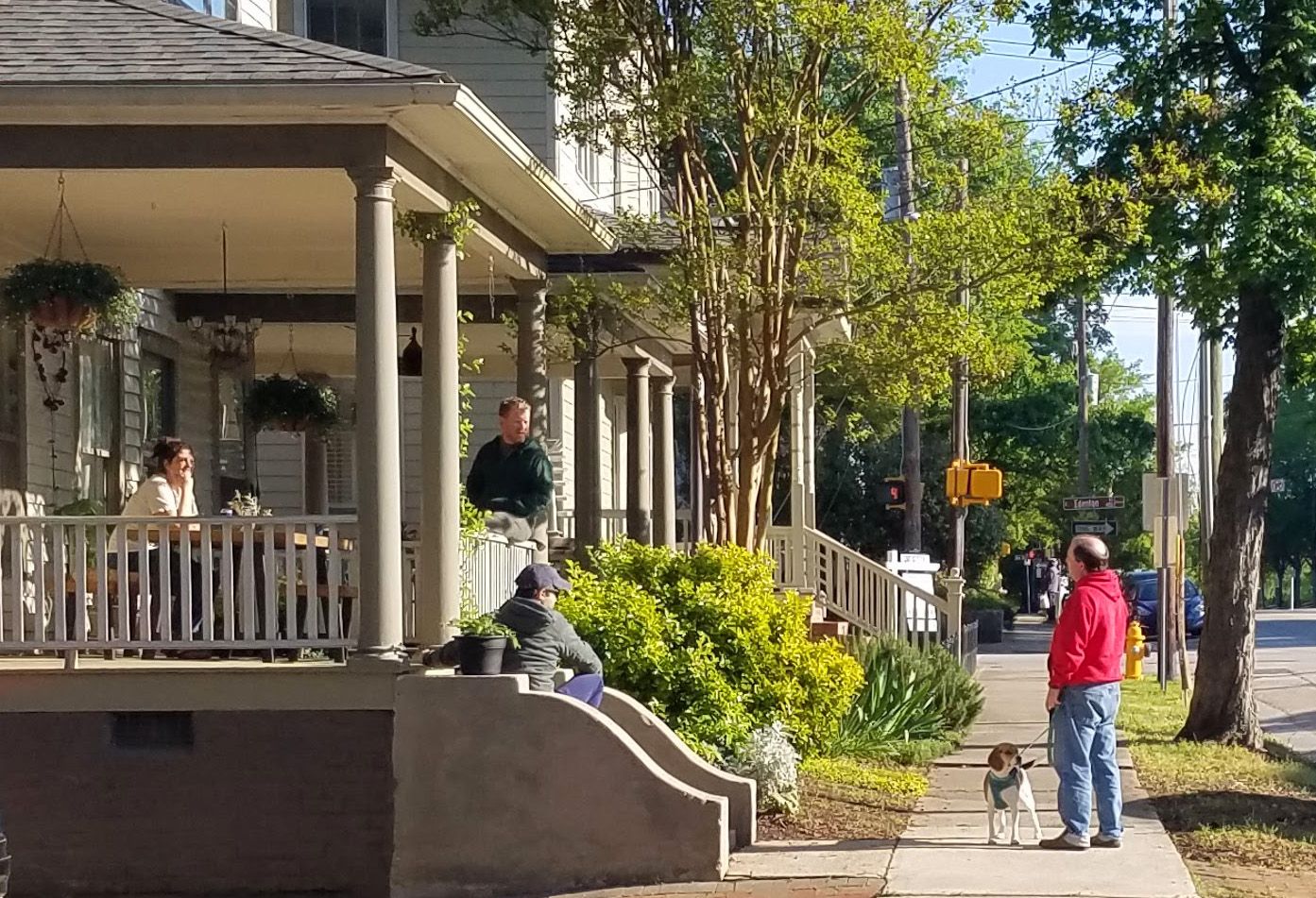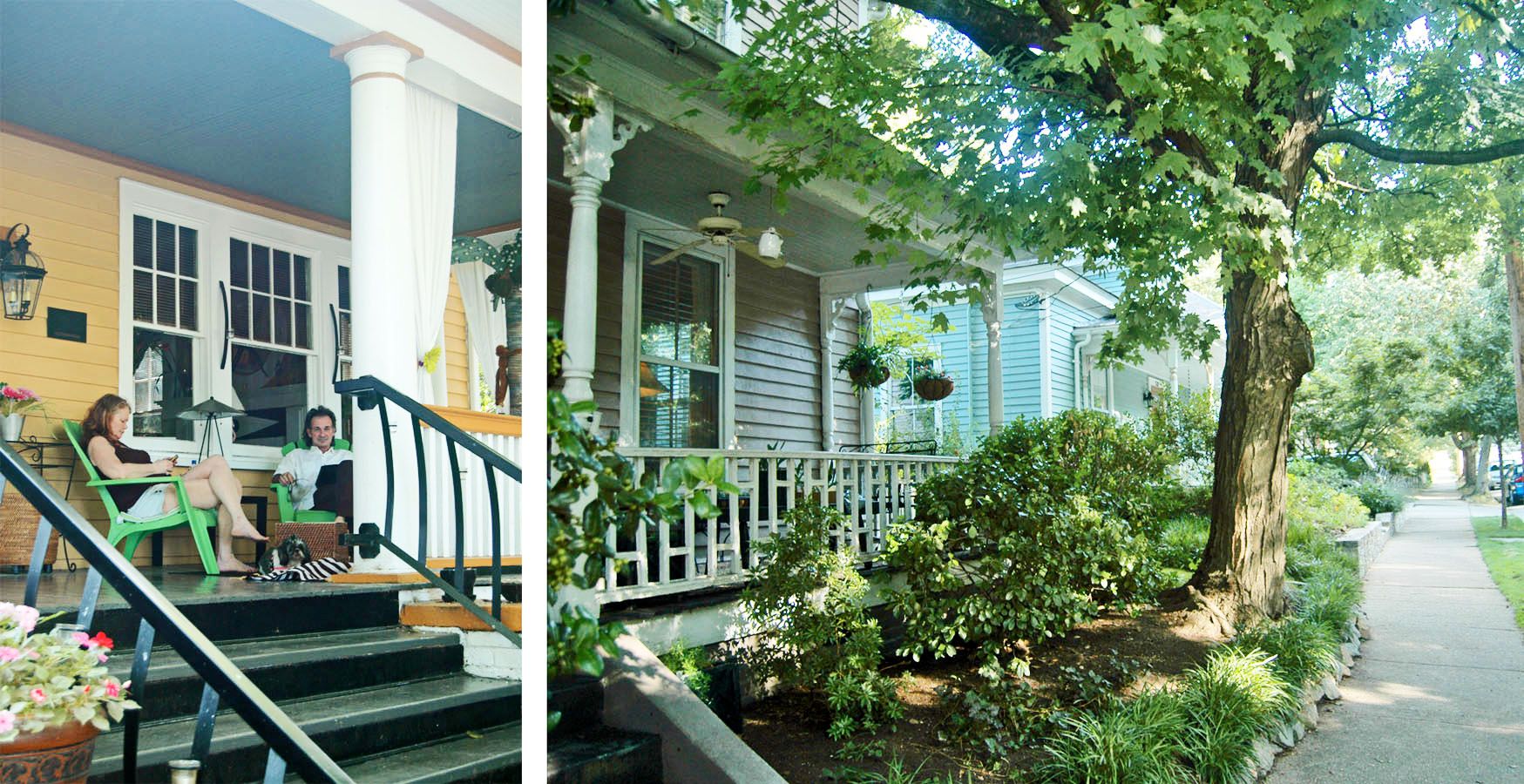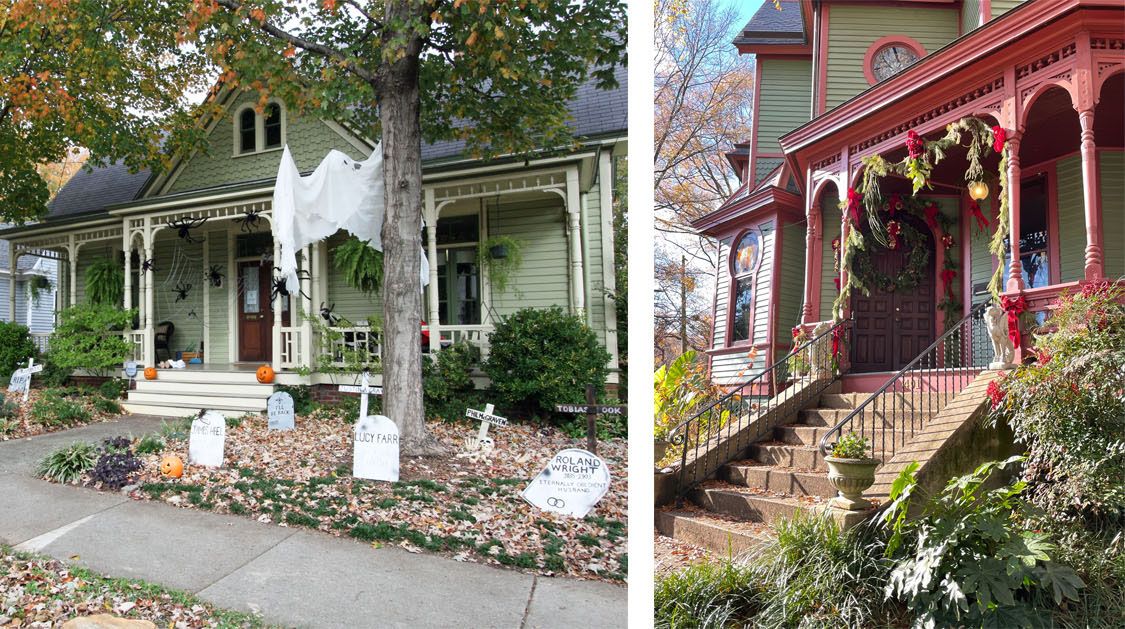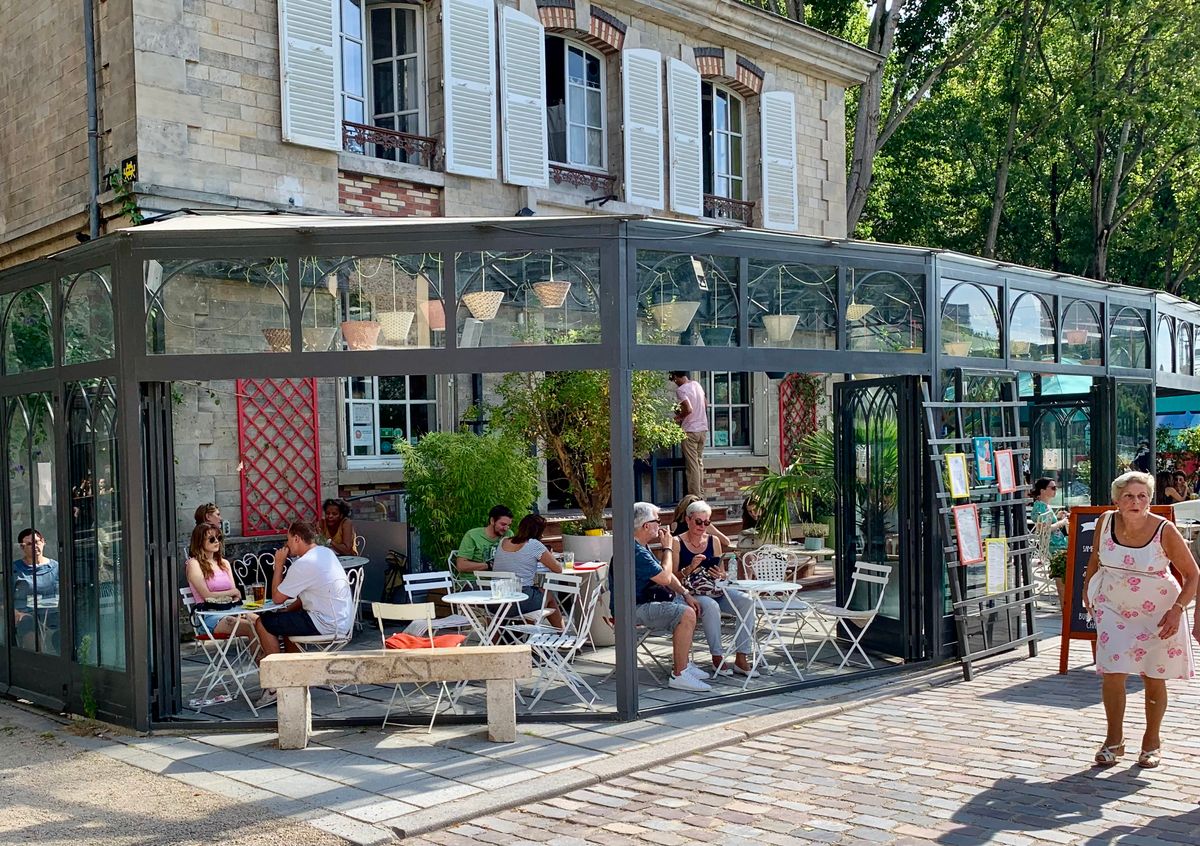Restoring Social Life to Communities Starts on the Porch

Porches used to be an integral part of our communities and in my neighborhood in Raleigh, North Carolina, they still are. Here, our lives take place on the sidewalks and the streets that we share. Together, our porches and sidewalks allow us to connect spontaneously with our neighbors and friends as they walk or drive by.

In the book Out on the Porch, author Reynolds Price wrote: “In the evenings, as the outdoor air provided a cool alternative to the stuffy indoor temperatures, the entire family would move to the front porch.” For those who have them, porches are often natural gathering spaces, drawing people outside and providing a comfortable space to relax.
"The children might play in the front yard or the friendly confines of the neighborhood, while the parents rocked in their chairs, dismissing the arduous labors and tasks of the day into relaxation and comfort. Stories might be told, advice garnered, or songs sung. Whatever the traditions and manners of the family might be offered in this setting. What the family room or TV room of post-World War II America would become, existed first as the front porch.” —Reynolds Price
Though porches remained popular in the U.S. for nearly 100 years, modern developments such as air conditioning, the popularity of television, and busy, car-trafficked streets led to a decline in use.
Luckily, there has lately been a renewed appreciation of porches. Architect Dan Stalker, for one, includes front porches in all of his home designs. He says it is an important part of his design identity: “I like the idea of the way front porches relate to the activity on the streets,” Stalker says. “In many communities, like ones I have worked on in California, there is no relationship between the home and the activity of the street other than the garage door. From my perspective it’s a very important component to have. It is how to make things better and more livable for the community.”

The critical social role of the simple porch has been highlighted by COVID-19. In this context, the porch can provide a refuge, a safe place to reconnect with others outside, or an escape from the confines of being locked down, whether in isolation or with family.


It’s wonderful to see people fully inhabiting their lots these days. It shows that we are collectively pushing the boundaries of how to connect socially from our homes. Front yards have become extended living rooms, with happy hours popping up across driveways, and porch concerts attracting audiences of neighbors along the street. We've found a way of connecting using what is at times the only public space immediately available to us: the street on which we live.

And when inside life is allowed to spill outdoors onto the porch, it enlivens the street, expressing the diversity of life in a neighborhood that otherwise remains hidden. These semi-enclosed outdoor spaces are exciting because they reflect the rhythms of daily domestic life taking place just beyond the house walls.


They reflect seasonal rhythms as well, acting as a stage that is dressed up to celebrate special occasions and holidays. Because a porch is only partially built, with partial walls, or even roofs, it allows homeowners to fill in the rest, decorating and inhabiting it as they see fit. Sometimes this makes the porch the most dynamic room in the house. It is, by design, an invitation to "placemake," providing each household with their own personal space to change over time, for all to see.

Porches offer you choice, allowing you to connect to the degree you choose with those around you. You can safely wave to neighbors, have conversations with passers-by, join in a neighborhood sing-along, dance, or just bury your nose in a book. In times like these, it is a welcome place to be. As "in-between" spaces, porches create a soft edge that mediates between individual and community, public and private, and in these times, offer a safe way to maintain our social, mental and physical health.

But size matters. A two foot-deep outdoor porch is very different from one that is six feet deep or more. The amount of use you get for each extra foot of depth is huge. Homes are typically measured in terms of cost per square foot, with outside space routinely undervalued and seen as “extra.” A more useful metric would be “life per square foot.” How much more life is generated by each additional square foot, regardless of whether it is inside or outside? One more foot of depth and you can sit in a chair, three more feet and you can have family dinners outside. Our exterior spaces should be designed to support meaningful activity.

Takeaways
- Porches are a great place for people to live out so much of their creative or social lives; whether that's making a public artistic statement, or simply saying "Howdy" to a neighbor.
- Porches are at their most social if they are paired with sidewalks — ideally, sidewalks that are nearby enough to allow for easy conversation. Add a small lawn between the sidewalk and the porch and you've got the ingredients for a community gathering place.
- Porches can be part of the "social spine" of our communities, and perform best when they provide enough space: namely, a porch that is at least six feet wide leaves the door open for many exciting uses.
- A few steps leading up to the porch are critical! This gives people on the porch a place to sit, and a slightly elevated view of the street, while keeping some degree of separation for privacy. But stairs to move from the porch to indoor spaces are not ideal: On-level access between the porch and the front door makes the transition between the spaces easier and more seamless.
- The life of a porch depends on the life of the rooms behind it. A well-used room inside will spill outside and animate the porch.
- The more, the merrier: If there is a series of porches along the street, the social fabric between them grows even stronger. If the street is narrow enough that it allows people to connect across it, the impact is multiplied yet again.
Where do we go from here?
We need these types of thresholds and close, accessible outdoor spaces that porches provide. We weren’t made to live in boxes, so these transitional spaces are essential to any humane human habitat. They are a kind of “handshaking zone” between each of us and the world beyond our doorstep.
It's not just about porches. It's also about redefining our front lawns along with the balconies, stoops, restaurants, cafés, outdoor displays, roof decks, and all other kinds of outdoor spaces that open our homes and businesses up to the street. They seem simple, but they are part of what allows us to connect to our neighbors and where we live. We must work to weave these kinds of spaces into all our housing, streets, and neighborhoods, because if there is anything this pandemic has taught us, it’s that we weren’t meant to live in isolation: We need connection and we need each other.
Author Tina Govan is an architect/placemaker in Raleigh, NC and principal of Placemaking Studio. She is also an active member of PlacemakingUS and PlacemakingX.
Related Articles



For more resources on porch placemaking, check out the resources from PlacemakingX and CoDesignStudio’s Porch Placemaking Week, and watch this video on porch placemaking for storefronts.
As we explore this aspect of community social life, we eagerly seek your input, whether that comes in the form of favorite images, places, or ways that communities around the world have created or maintained great public spaces. Please share with us your own thoughts and examples of communities that have great porches and outdoor shared spaces — Email your suggestions to hello@placemakingfund.org!












